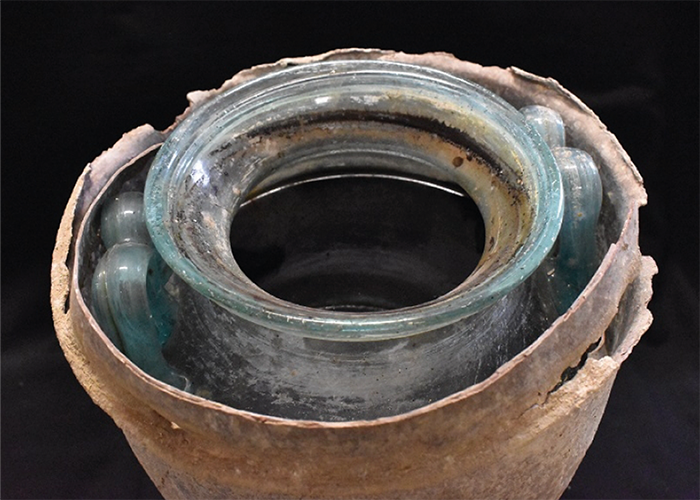
Credit: Juan Manuel Roman
World’s Oldest Wine Discovered
In 2019, archeologists uncovered an ash urn – roughly 2,000 years old – in a Roman mausoleum in Carmona, southern Spain. Surprisingly, the urn contained liquid of a reddish hue… Researchers from the University of Cordoba, Spain, analyzed the liquid using ICP-MS and HPLC-MS and found a distinctive mineral salt profile, as well as some typical polyphenols, which allowed them to identify the liquid as white wine – the oldest wine ever discovered. In fact, the mineral salts present were consistent with the white wines currently produced in the territory, which belonged to the former province of Betis, especially Montilla-Moriles wines.
Keto’s Memory Mechanisms
A ketogenic diet, which is a high-fat, low-carbohydrate diet, has previously been shown to not only enhance memory in older adults with mild cognitive decline, but also improve healthspan, memory, and cognition in aging mice. Now, researchers have evaluated the changes in the cortical proteome of aged mice after a long-term administration of a cyclic ketogenic diet. They found that a ketogenic diet induces changes in the proteome landscape of cortical synapses that directly impact the structure and function of synaptic organization. The authors propose a scenario whereby ketone bodies (specifically BHB) play a crucial role not only as an energy metabolite, but also as a signaling metabolite.
“If we could recreate some of the big-picture effects on synapse function and memory just by manipulating that signaling pathway in the right cells," said co-author Birgit Schilling in a press release. "We wouldn't even need to eat a ketogenic diet in the end."
Serum proteomic analysis – combining magnetic bead-based weak cation exchange (MB-WCX), MALDI-TOF-MS, LC-MS/MS, and ELISA – uncovers five novel serum biomarkers for depression. Link
Researchers use quantitative immunoprecipitation mass spectrometry (QIP-MS) to non-invasively monitor treatment response in patients with multiple myeloma receiving CAR T-cell treatment. Link
Proton transfer reaction (PTR)–ToF-MS analysis finds that 60 percent of ozone and secondary organic aerosol formation potential in summertime Los Angeles is caused by biogenic terpenoid emissions, suggesting that this contribution strongly increases with temperature. Link
Researchers use LC-IMS-MS platform to simultaneously evaluate PFAS bioaccumulation and lipid metabolism disruptions in mouse liver samples; results indicate that alteration of inflammation, oxidative stress, and cellular signaling processes are caused by emerging PFAS exposure. Link
Bruker’s commercial TIMS-Q-TOF platform (timsTOF Pro) can be used for both omics and native mass spectrometry applications, but modifications to the commercial RF drivers for both the TIMS analyzer and quadrupole are necessary to analyze protein complexes greater than about 60 kDa. Link
Quiz: Do you know your proteomics history?
Last week, we asked readers of the Mass Spec newsletter when the term “proteomics” was first used in the literature. Of those who took part, around three quarters selected “1998,” the other quarter selected “1994.” Nobody selected “1996.”
The answer? The term “proteomics” was first used by Marc Wilkins in 1994.
This article by Northwestern gives some more of the history. “Then a doctoral student attending a 2D electrophoresis conference in Italy, Wilkins presented a co-authored paper on protein identification techniques. He also discussed new terminology.”
“‘Whilst you could describe all the genes in the genome, there wasn’t a way to do the same thing for proteins,’ Wilkins recalled in an interview with JAMA. His solution: ‘It seemed obvious to combine protein with -ome, as it had been used in genome and biome.’ Thus, the word proteome.”
Happy 30th Birthday, Proteomics!




